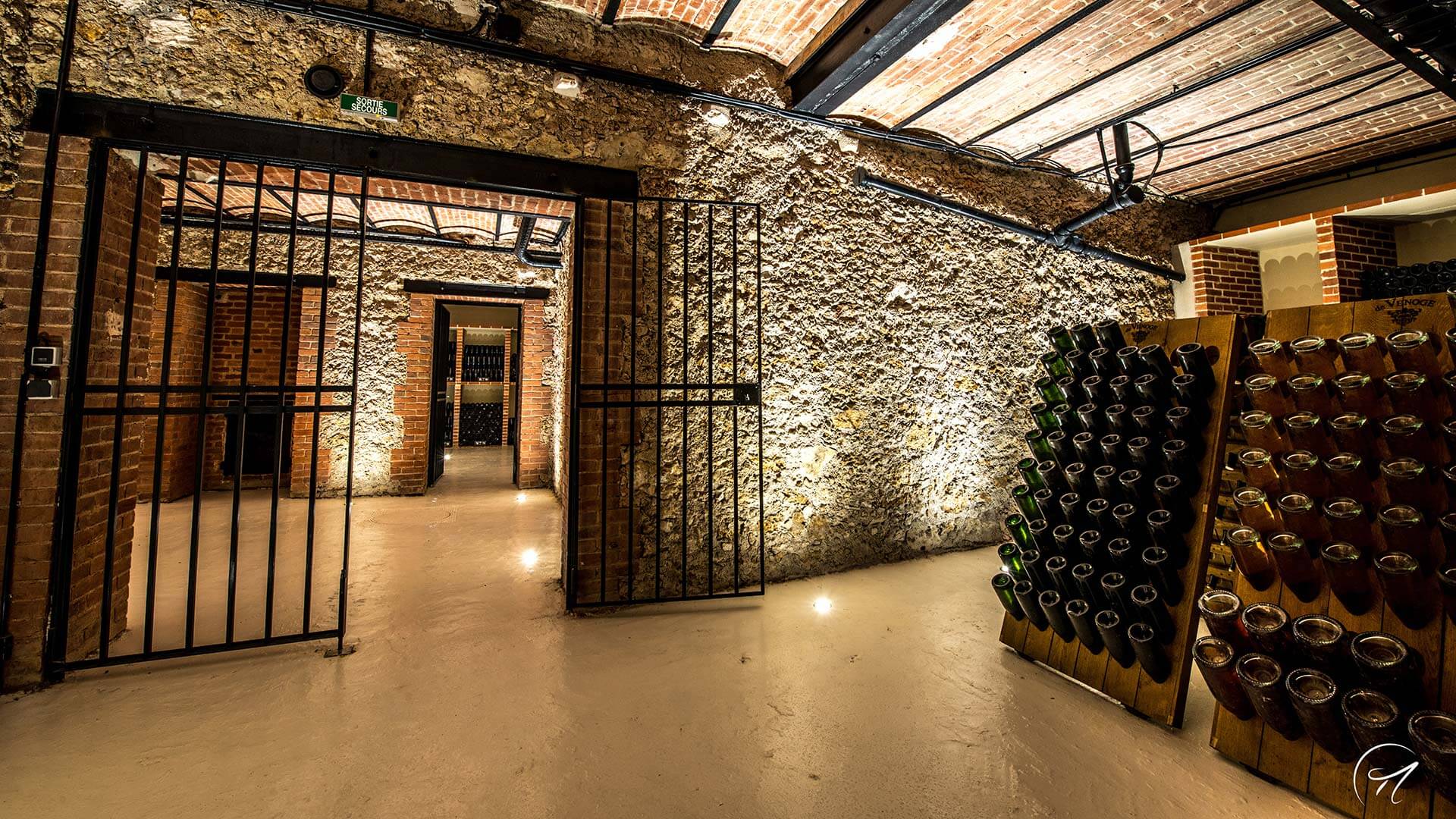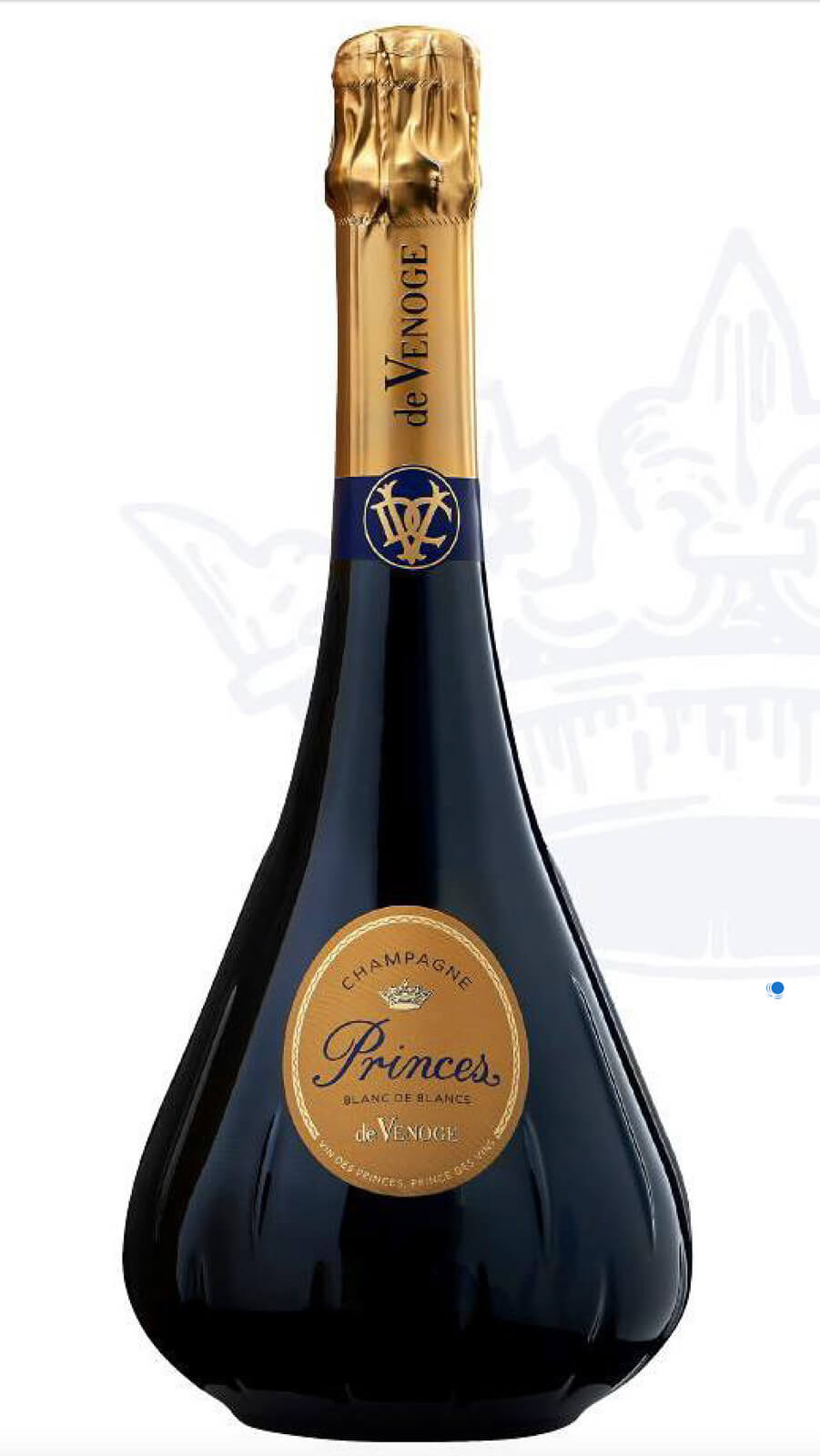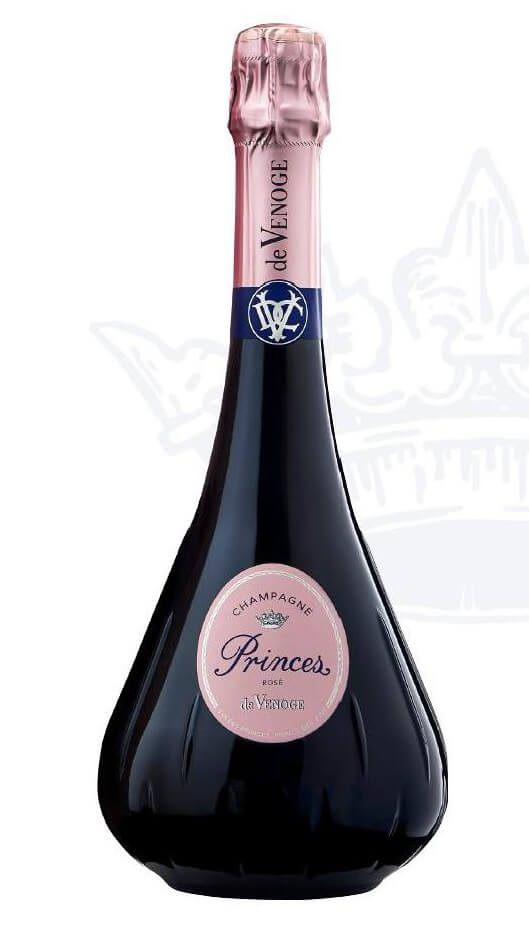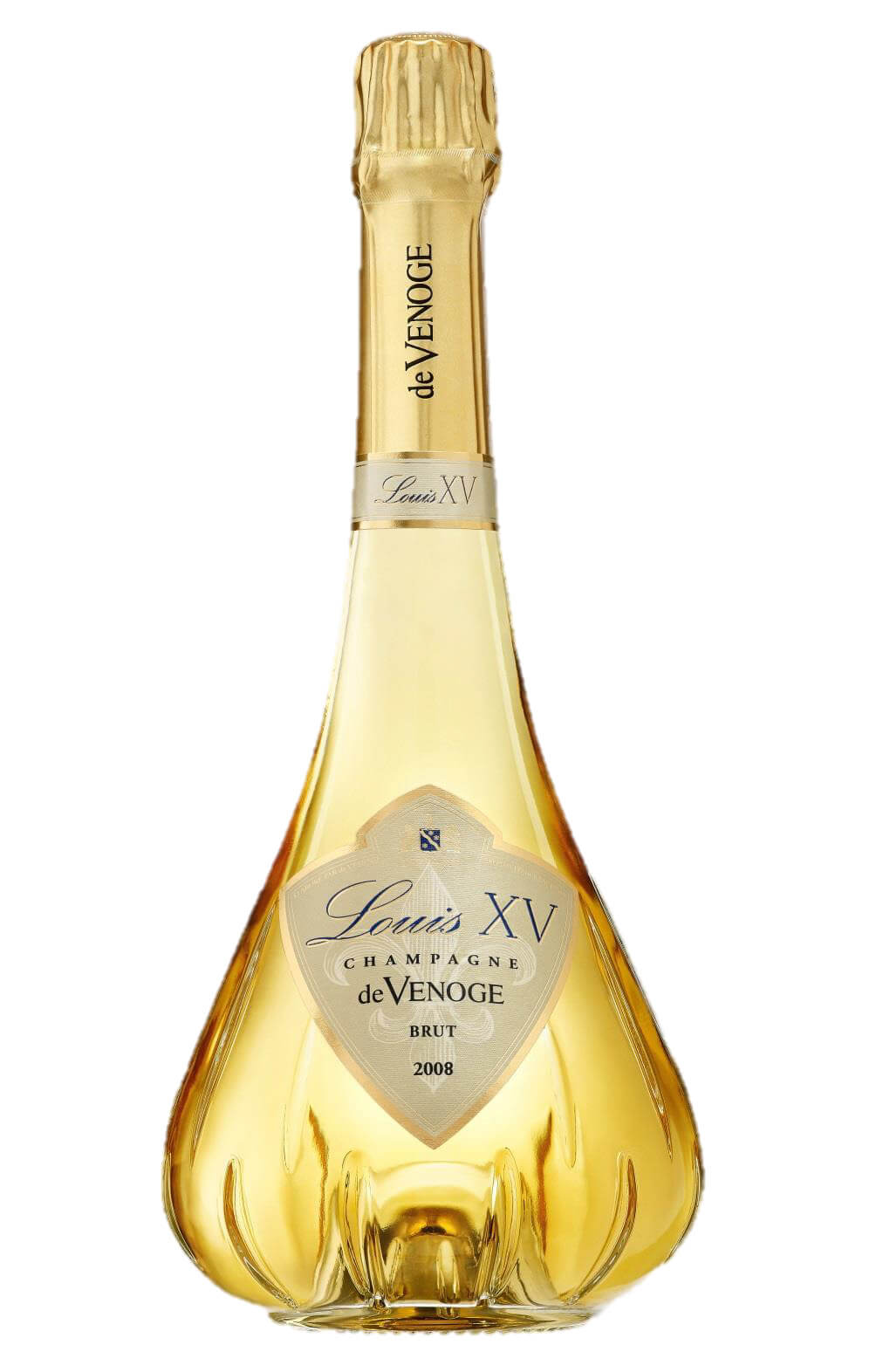by Ken Gargett
There are always some wines and champagnes that seem more like background music than headline acts. They are almost always around but you seem to hear of them more than drink them. You might have a bottle or two in the cellar, but they are rarely wines you chase. For me, Champagne de Venoge is one of these. It seems to have been around forever, usually within reach, but I don’t recall anyone focusing on it, chasing bottles, filling the cellar.

Hôtel de Venoge
A dinner featuring its prestige cuvée, the Louis XV, from the 2008 vintage, would be the ideal chance to establish just where the house and that wine sat in the scheme of things. And, as it turned out, find out plenty more. What I did not expect was for it to be as controversial as it all was.
One of the joys of looking at these champagnes is the chance to delve back into history and find out thoughts over the years. With Champagne de Venoge, it does seem that many of the writers over time had a similar experiences as mine. It was around but not something on which they focused.
Around? In 1898, Champagne de Venoge was selling a million bottles annually. Not bad, but when you consider that was out of total champagne sales of around 30 million bottles we can see what a force they were. Today, Champagne de Venoge moves around 700,000 bottles out of around 300 million.

Champagne de Venoge cellar
What is key to keep in mind with all this is that de Venoge is now under new management, as they say. The current team has a very different focus on what has bedeviled this house for so many years and it is definitely moving toward placing this house among the best of the region. If we jump to the bottom line, I think it is fair to say that it is not there yet but that it is certainly on its way.
Champagne de Venoge: opinions from the international press
De Venoge was founded in 1837. Henri-Marc de Venoge left Switzerland in 1825 for the Champagne region and 12 years later established his eponymous house. He is also famous for creating the first illustrated label in the history of Champagne in 1838.
His son Joseph took over in 1845 and then his son Gaëtan. The house became a favorite of actress Sarah Bernhardt.
So what do the international writers think? I found no mention from Michael Edwards in his The Finest Wines of Champagne nor in Tyson Stelzer’s latest, The Champagne Guide 2020-2021. My favorite Champagne author, Peter Liem, in his excellent Champagne barely mentions de Venoge. The equally impressive Richard Juhlin in The Scent of Champagne does not come across as much of a fan, but he does give the 1976 Princes a score of 99 – heights rarely scaled. He seems a bit miffed that the Princes morphed into the Louis XV.
Another leading authority, Tom Stevenson, in Christie’s World Encyclopedia of Champagne and Sparkling Wine is no more excited than Juhlin and is particularly scathing of the shape of the bottle used for Louis XV and some of the Princes champagnes. He was also no fan of the previous management – words like “directionless” and “unwanted” are not those one usually associates with the unfailingly courteous Stevenson. He also notes that the Princes could be a great wine and that the wines are significantly improving.
As to the bottle, up to the individual. I’ve heard plenty of very positive comments, more than I’ve heard negative. Just like the champagnes themselves, it divides the crowd.
I thought perhaps I should go back to the earlier writers. Bonal in Le Livre d’Or du Champagne has nothing to offer, but Henry Vitzelly in his 1882 History of Champagne makes a single mention, where he describes the champagne of another very well known house rather disparagingly, noting it as “inferior even to the de Venoge, a manufacturer of common-class champagne.” Again, these are the historical views and, as they say in the classics, do not necessarily reflect the situation today.
Champagne de Venoge: the wines
Looking at the wines, the standard NV, the Cordon Bleu Brut, is a fine non-vintage. Minerally/chalky backing with some rounded darker fruits. De Venoge uses a significant amount of reserve material, with the cepage (grape varieties) 50 percent Pinot Noir, 25 percent Meunier, and 25 percent Chardonnay. It is good-value drinking.

Champagne de Venoge Princes Blanc de Blancs
The Princes Blanc de Blancs, another NV, is impressive. Appealingly fresh with notes of florals, stone fruits, spices, green apples, pears, and a lovely saline/oyster shell touch. Bright acidity with good length and a seductive texture. This has promise. The dosage is just six grams/liter. Lots to like with this very fine Blanc de Blancs style.
I have touched on how good the 2012 vintage is on previous occasions and de Venoge’s 2012 is certainly that. It is a blend of 70 percent Pinot Noir and 30 percent Chardonnay from a mix of Grand and Premier Cru vineyards. Six years on lees and with seven grams/liter dosage. Only 5,000 bottles were made. Hints of honey, sunshine, and stone fruit, this is wonderfully generous. Layered, fresh, balanced, and textural. A fine 2012.

Champagne de Venoge Princes Rosé
The de Venoge Blanc des Noirs is a fine example of the style but it was the Princes Rosé NV that really stood out for me: light, fresh, balanced, and delicious.

Champagne de Venoge Cordon Bleu Blanc de Noirs
Champagne de Venoge: Louis XV
The two big guns, however, were what really held the interest. The crowd was most definitely divided (there was a subsequent suggestion that this was partly caused as the wines were served a fraction too warm – quite possibly, and it is something to watch when serving champagne).

Champagne de Venoge Louis XV 2008
The Louis XV 2008 (approx. AUD$500) is the prestige release from this house. The wine is made from grapes sourced only from Grand Cru vineyards, evenly divided: 50 percent Pinot Noir and 50 percent Chardonnay (for the Chardonnay, 20 percent Avize, 15 percent Oger, and 15 percent Le-Mesnil-sur-Oger; and for the Pinot Noir, 41.5 percent Verzenay and 8.5 percent Bouzy). The 2008 is the first de Venoge has ever made where there was no malolactic fermentation at all. A decade on lees.
The name came about as a tribute to the man who many claim was crucial for the development of champagne. It was this king of France, Louis XV, who created the edict in 1728 that allowed for the transportation of champagne. Prior to this, it had been considered too fragile and hence was largely restricted to the region.
This was, though, no act of altruism to benefit the masses. Rather, it was a decision made entirely thanks to self-interest (can you imagine someone doing that today? Unthinkable!). Apparently, Louis’s favorite mistress, Madame Pompadour, known for the quote “Champagne is the only wine that leaves a woman more beautiful after drinking it” was a lover of champagne, although as a great friend of Claude Moët, it was not this house she was drinking, of course. Madame Pompadour lived in Normandy, and the edict allowed her to enjoy her favorite beverage. A happy mistress means a happy king.
Madame Pompadour is also considered to have made a further contribution to champagne with the first champagne coupes allegedly modelled on her breasts, although historians sometimes attribute this to Marie Antoinette. We shall probably never know.
From one of the greatest of all champagne vintages, 2008, it was not unfair to expect much from it. For some, it more than did that. Others, not so much. It does show that even at this level, wine is very much a personal and subjective thing. I found it a wonderful example of the vintage, perhaps not yet ranking with the greatest of them but certainly a superb champagne and evidence that the house is well on its way to join the ranks of the elite.
Beautifully fragrant, there are notes of honey and stone fruit. Quince and honeysuckle with a touch of citrus, notably grapefruit and orange rinds. Again, that hint of sea breeze/oyster shell. Tremendous length and such a seductive and yet refined texture. Finely balanced. This is terrific stuff. For me, 96.
It is worth noting that some markets may well have moved on to the 2012, which I have not tasted, but given the quality of the vintage one should have confidence that this will also shine.
The other of the “big guns” was a champagne specially disgorged for the tasting, magnums of 1988 (for me, along with 2008, one of the top two vintages of the last 40 years, though there is certainly plenty of competition for the title).
Not unsurprisingly after all this time, the magnums did vary. That said, the champagne was still wonderfully alive and fresh, even youthful in its own way. Great length and finely balanced. We have notes of quince, mushrooms, stone fruit, honeycomb, and florals. The truffle/mushroom note is fascinating. I often find it in the recently disgorged Bollinger RDs, though not always. With these, it varied among the magnums – some had the barest whiff while others exhibited it more prominently. For me, 97.
Now, this might seem like a note on a wine that almost no one will ever see, but it is more than that. Those interested can contact the house and come to an arrangement in respect of older vintages that de Venoge will then disgorge for you. Needless to say, this is not a cheap procedure (the magnums of 1988 were priced at AUD$2,000), nor should it be, but if there is a vintage that appeals for an anniversary or birthday or simply as a favorite, this is a way to experience that.
De Venoge might be a champagne house not currently on your radar, but it certainly deserves attention, especially in respect to its top wines.
For more information, please visit champagnedevenoge.com.
You may also enjoy:
Bollinger RD 2004: When It Came To Champagne (And Much Else), Madame Bollinger Had Excellent Taste
Louis Roederer Cristal 2008: Supreme Elegance And Ethereal Grace
Dom Pérignon 2008: From The Monk’s Earliest Beginnings To The Most Glorious Champagne Vintage





















































Leave a Reply
Want to join the discussion?Feel free to contribute!